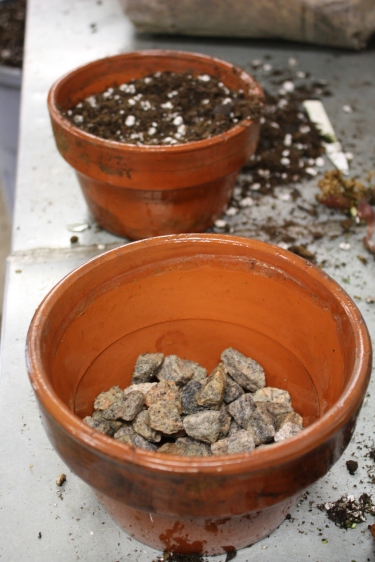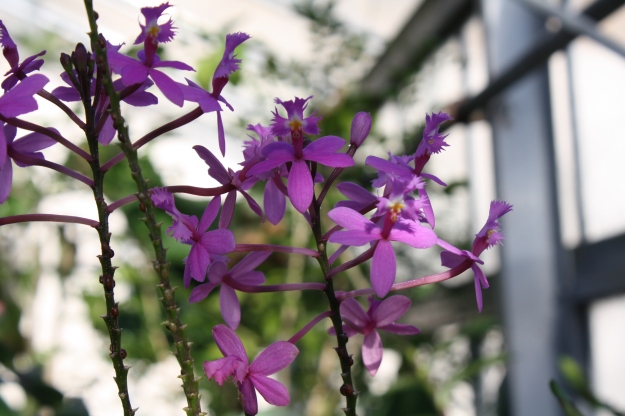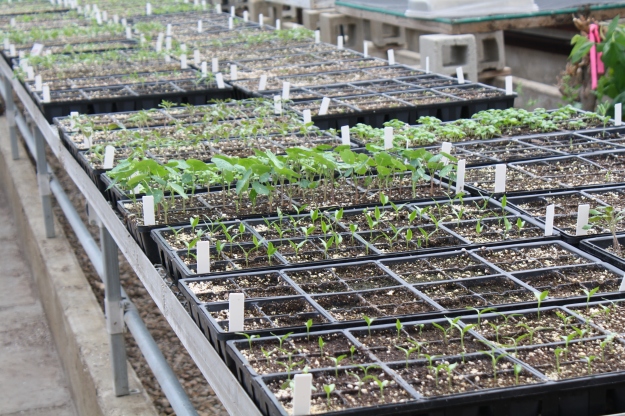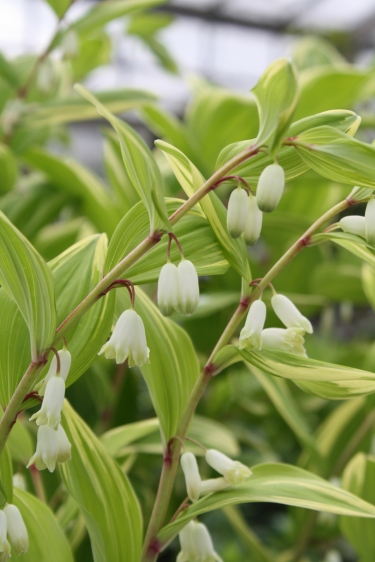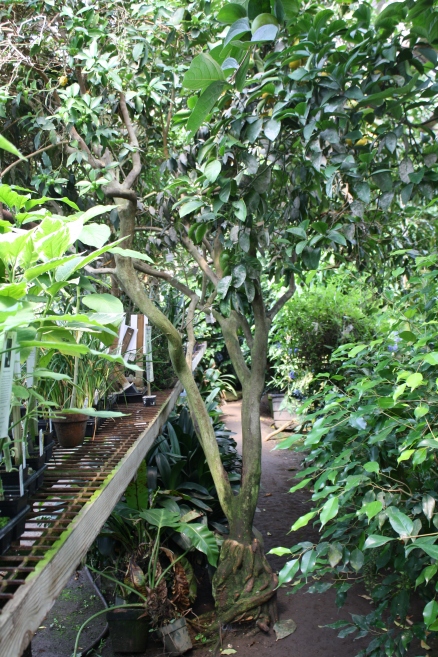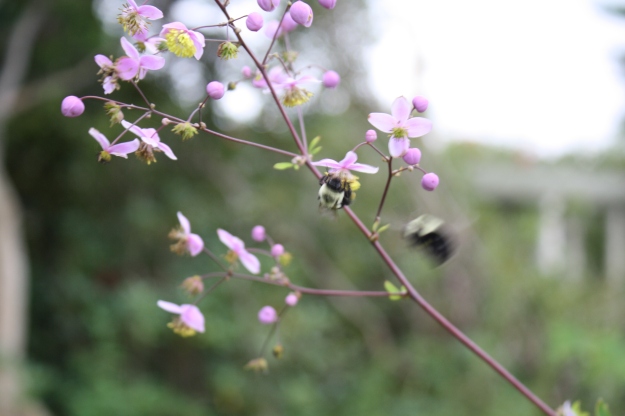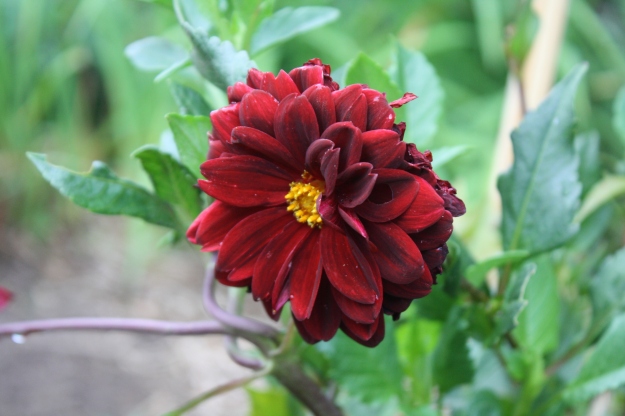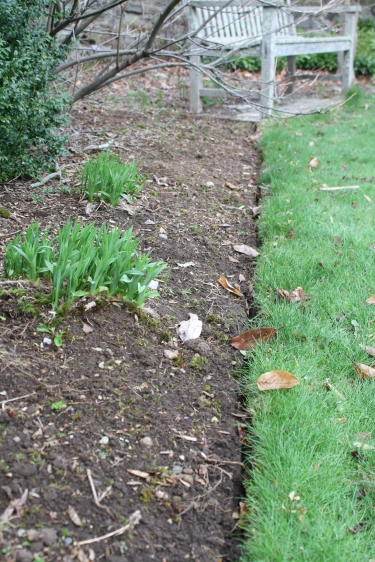
A while back I wrote about our Bog full of carnivorous plants, including the strange little Venus Flytrap, in ” Creatures-from-the-Black-Lagoon/ “.
Last week my favorite blog, Botany Photo of the Day from the University of British Columbia in Vancouver, featured the Venus Flytrap. It linked to a video of an insect being captured by the plant. I have spent plenty of time staring at Venus Flytraps but I don’t think I ever saw one in action. It’s really fast!
Technical ridiculousness prevents me from actually getting the video up, so here is the BPotD writeup, with the link:
“Today we have an image of Dionaea muscipula, by Anne Elliott (aka annkelliott@Flickr), who also provided the photo of the Oxalis for the series. A photograph of this species showing its completed nastic movement is available via the Botany Photo of the Day Flickr Pool: see Rob Co’s photograph of Dionaea muscipula. Thank you Anne and Rob for sharing your great shots!
To finish off the series on nastic movements, I couldn’t resist including Dionaea muscipula or the Venus flytrap. This species exhibits seismonasty or thigmonasty, which is the nastic movement due to a touch stimulus (see a video: Venus flytrap capturing prey). This type of nastic movement was also highlighted in the first entry of the series on Mimosa pudica.
Dionaea muscipula is native to North Carolina and South Carolina in the USA. Populations of plants recorded in New Jersey and Florida are often considered to be exotic introductions. Due to its special qualities, Venus flytrap is also a popular houseplant.
As noted above, Venus flytrap is a carnivorous species that traps and digests insects for a source of nitrogen. The modified leaves of this species consist of an upper and lower portion. The lower portion, a flat stalk, terminates with the two-lobed upper portion (with the lobes joined by the midrib). Each lobe is lined with comb-like bristles. The red-coloured centre of the trap contains three sensitive trigger hairs (seen clearly in Anne’s image). When stimulated by touch, the trap shuts by means of electrochemical signals. The trap may take several minutes to close fully. Once closed, it will remain so for 5-7 days in order for the plant to secrete enzymes and digest the insect (see: Volkov, AG et al. 2008. Kinetics and Mechanisms of Dionaea muscipula Trap Closing. Plant Physiology. 146(2):694-702).”
There are a number of Venus Flytrap videos on youtube but the one linked above ( Venus flytrap capturing prey ) on Wikipedia is by far the best one I’ve seen.

 Venus Flytraps are easy to grow at home. There are just a few things to remember since they do not grow like your average houseplant.
Venus Flytraps are easy to grow at home. There are just a few things to remember since they do not grow like your average houseplant.
1.They like full sun.
2. Pot them up in sphagnum moss and sit the pot in a saucer of water. They need to be that wet, after all, they are bog plants. Don’t let them dry out. Change the water occasionally so it stays somewhat clean.
3. Don’t fertilize! A bog is a low fertility environment; that’s why the flytraps eat insects: to supplement their diet. Fertilizer will kill them!
4. Don’t feed them –they have evolved to feed themselves. Feeding will kill them.
5. Opening and closing takes a large amount of energy for the plant. If you touch it to make it close repeatedly, it will become weak and die.
6. From the Logee’s Greenhouse website: “Maintain a minimum temperature of 30°F . They prefer cool night temperatures for two months during the winter to induce a dormant period. Night temperatures in the high 30’s to low 40’s are ideal. A cool, neglected windowsill is perfect. During active growth, we keep them warm, above 60°, which speeds up growth.”
So, this is a houseplant that does well being left alone (except for water). If you are curious about other carnivorous plants or would like more information about the Flytraps, the International Carnivorous Plant Society can tell you everything you need to know, and more.




